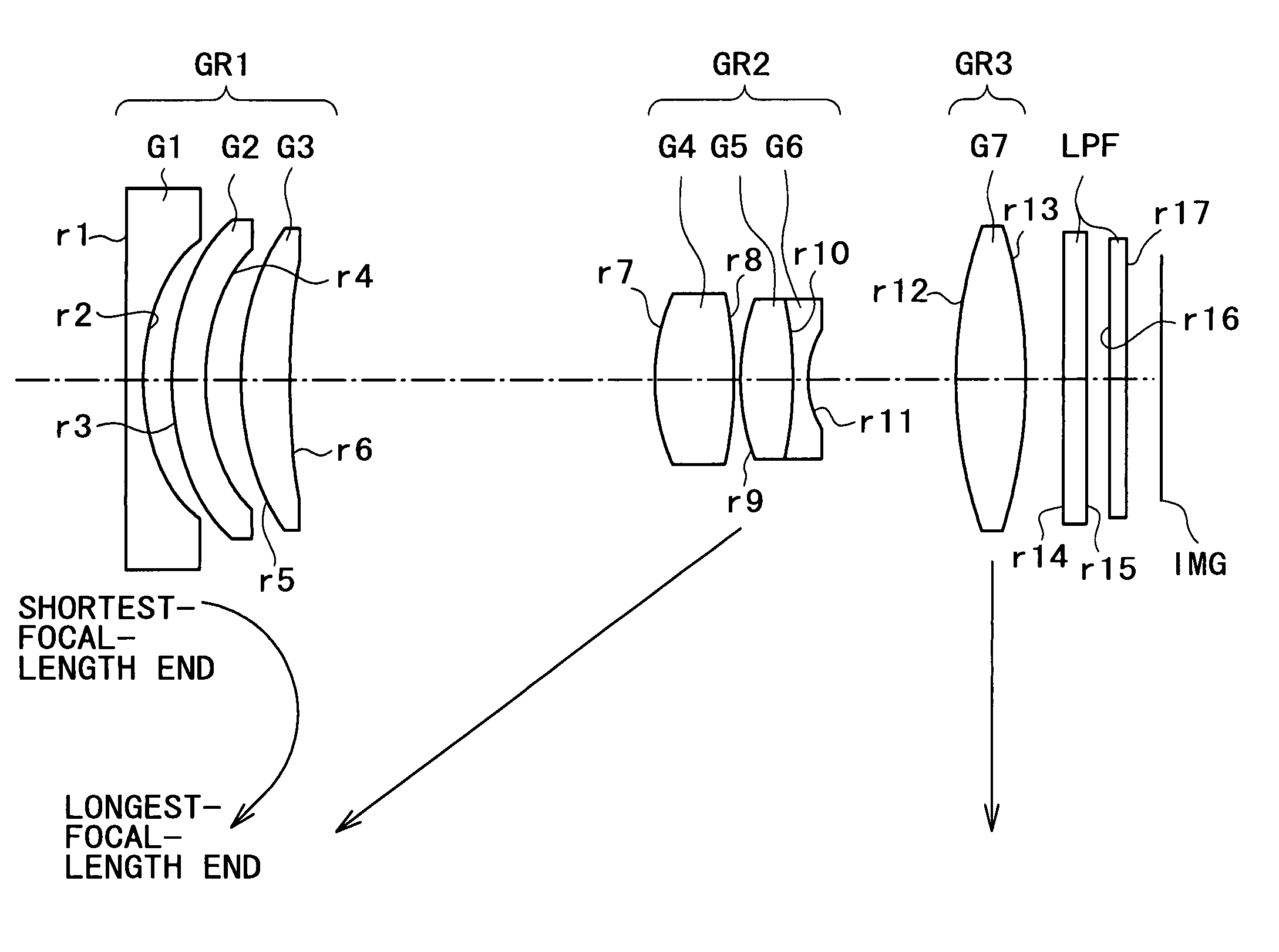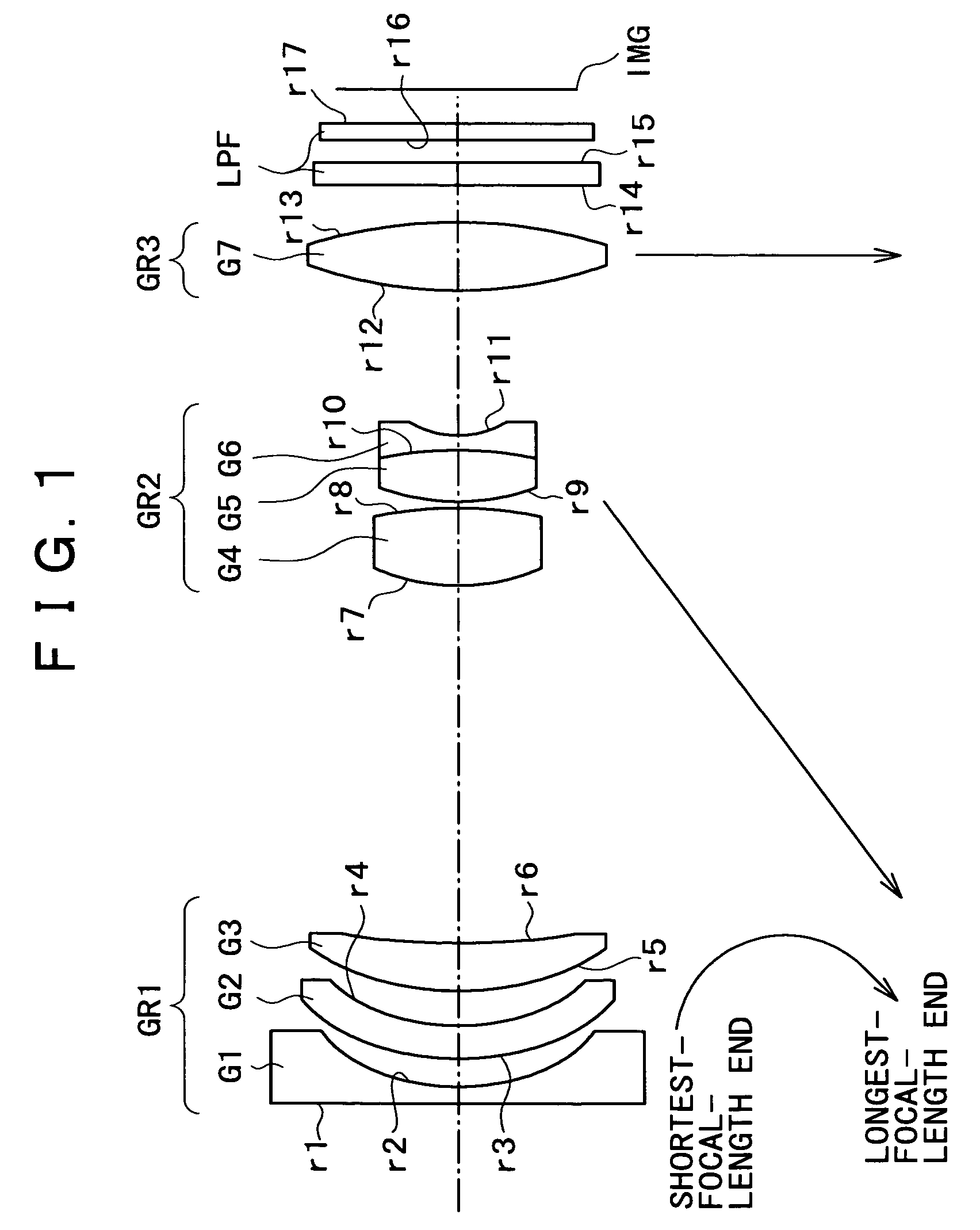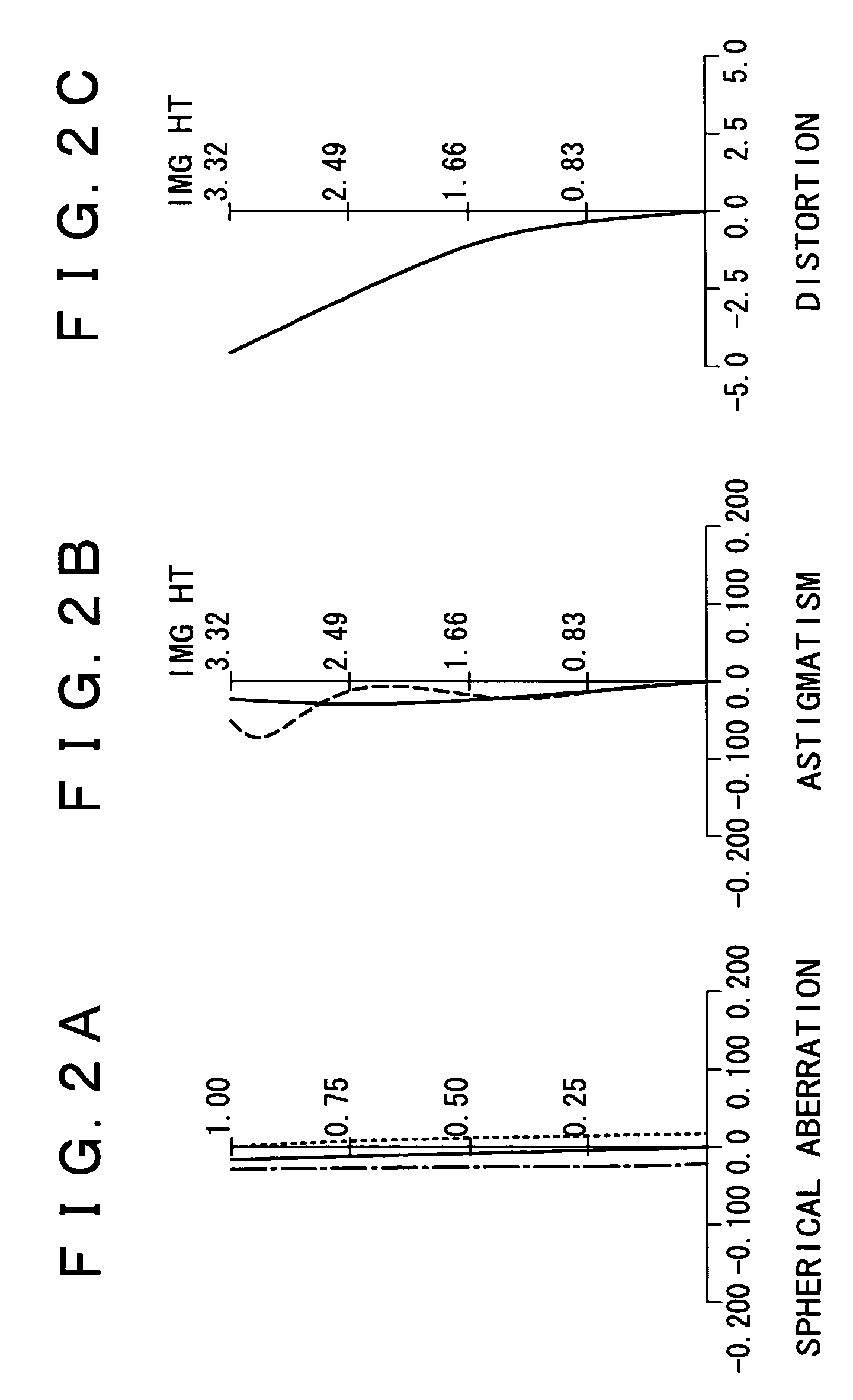Zoom lens and imaging device
a zoom lens and imaging device technology, applied in the field of zoom lenses and imaging devices, can solve the problems of inability to collapse the lens in a satisfactorily small size, inability to form inability to meet the needs of the zoom lens in a short length, so as to improve the focusing ability of the zoom lens, the effect of low cost and compact construction
- Summary
- Abstract
- Description
- Claims
- Application Information
AI Technical Summary
Benefits of technology
Problems solved by technology
Method used
Image
Examples
first embodiment
[0038
[0039]A zoom lens in a first embodiment according to the present invention shown in FIG. 1 has a negative first lens group GR1, a positive second lens group GR2 and a third lens group GR3 arranged in that order from an object side toward an image side. The first lens group GR1 includes a negative first single lens G1 having a surface having a large curvature and concave toward the image side, a negative second lens G2 having opposite aspheric surfaces and formed of a plastic material, and a positive third lens G3. The second lens group GR2 includes a positive single lens G4 formed of a plastic material, and a compound lens G5 / G6 formed by bonding together a positive single lens G5 and a negative single lens G6. The third lens group GR3 includes a positive single lens G7 having opposite aspheric surfaces and formed of a plastic material.
[0040]FIGS. 2A, 2B and 2C show spherical aberration, astigmatism and distortion, respectively, caused by the zoom lens in the first embodiment s...
second embodiment
[0048
[0049]FIG. 5 shows the construction of a zoom lens in a second embodiment according to the present invention. Referring to FIG. 5, the zoom lens has a negative first lens group GR1, a positive second lens group GR2 and a positive third lens group GR3 arranged in that order from an object side toward an image side. The first lens group GR1 includes a negative first single lens G1 having a surface having a large curvature and concave toward the image side, a negative second lens G2 having opposite aspheric surfaces and formed of a plastic material, and a positive third lens G3. The second lens group GR2 includes a compound lens G4 / G5 formed by bonding together a positive single lens G4 and a negative single lens G5, and a positive single lens G6 having opposite aspheric surfaces and formed of a plastic material. The third lens group GR3 includes a positive single lens G7 having opposite aspheric surfaces and formed of a plastic material. The use of the positive single lens G6 hav...
third embodiment
[0054
[0055]FIG. 9 shows the construction of a zoom lens in a third embodiment according to the present invention. Referring to FIG. 9, the zoom lens has a negative first lens group GR1, a positive second lens group GR2 and a positive third lens group GR3 arranged in that order from an object side toward an image side. The first lens group GR1 includes a negative first single lens G1 having a surface having a large curvature and concave toward the image side, a negative second single lens G2 having opposite aspheric surfaces and formed of a plastic material, and a positive third single lens G3. The second lens group GR2 includes a positive single lens G4 having opposite aspheric surfaces and formed of a plastic material, and a compound lens G5 / G6 formed by bonding together a positive single lens G5 and a negative single lens G6. The third lens group GR3 includes a positive single lens G7 having an aspheric surface facing the object side.
[0056]FIGS. 10A, 10B and 10C show spherical abe...
PUM
 Login to View More
Login to View More Abstract
Description
Claims
Application Information
 Login to View More
Login to View More - R&D
- Intellectual Property
- Life Sciences
- Materials
- Tech Scout
- Unparalleled Data Quality
- Higher Quality Content
- 60% Fewer Hallucinations
Browse by: Latest US Patents, China's latest patents, Technical Efficacy Thesaurus, Application Domain, Technology Topic, Popular Technical Reports.
© 2025 PatSnap. All rights reserved.Legal|Privacy policy|Modern Slavery Act Transparency Statement|Sitemap|About US| Contact US: help@patsnap.com



